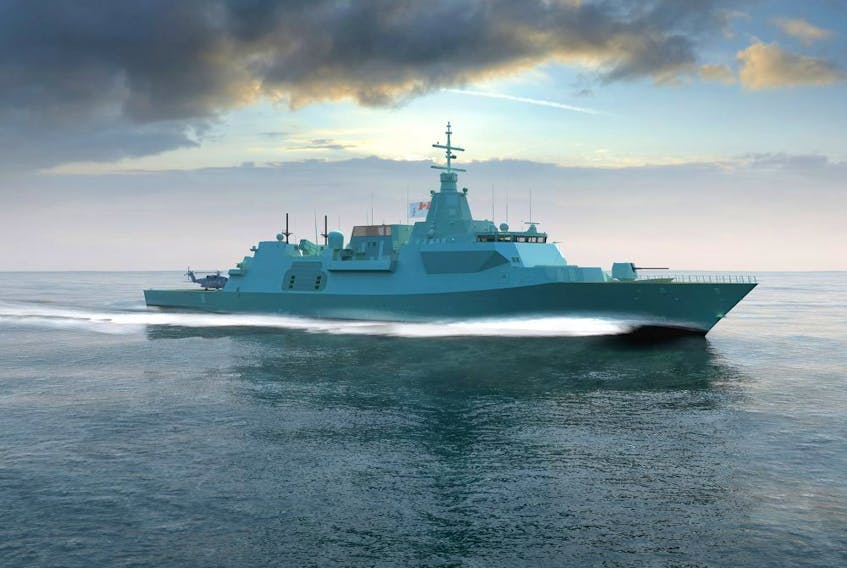The US Navy is moving ahead with its frigate program but the ship design selected by Canada, the United Kingdom and Australia won’t be considered as the Americans are only considering proven vessels.
Because the U.S. FFG(X) future frigate competition will only accept proven, at-sea designs, BAE Systems of the United Kingdom has decided not to enter its Type 26 Global Combat Ship in the competition, the U.S. Naval Institute’s publication, USNI News, reports.
The Canadian government plans to buy 15 Type 26 warships in a project now estimated by the Parliamentary Budget Officer to cost $70 billion. The project, known as Canadian Surface Combatant, is the largest single expenditure in Canadian government history.
The Liberal government announced in February that it had entered into a contract with Irving Shipbuilding to acquire new warships based on the Type 26 design being built in the United Kingdom. With Canada ordering 15 of the warships, the Royal Canadian Navy will be the number one user of the Type 26 in the world.
The United Kingdom had planned to buy 13 of the ships for its Royal Navy but cut that down to eight. Australia plans to buy nine of the vessels designed by BAE.
But the Type 26 design is unproven. Construction of the first ship for the Royal Navy began in the summer of 2017 but that vessel is not expected to be accepted into service until 2025.
Canada hopes to begin construction of its first Type 26 in the early 2020s.
Related articles:
Cost of Canadian navy warship project increases to $70 billion, according to new PBO estimate
China warships leave Australia after surprise visit 'raises hackles'
CHRISTIE BLATCHFORD: Canadian military has bigger problems beyond the curse of sexual misconduct
Alan Baribeau, a spokesman for U.S. Naval Sea Systems Command, told USNI News, the U.S. Navy requires a proven, in-the-water design for its future frigate program. “To promote and provide for full and open competition, the Navy will consider any hull form — foreign and domestic — that meets the requirements, will be built in a U.S. shipyard and has a parent design that has been through production and demonstrated (full scale) at sea,” Baribeau told USNI News.
The entry of the BAE Type 26 warship in the Canadian competition was controversial from the start and sparked complaints the procurement process was skewed to favour that vessel. Previously the Liberal government had said only mature existing designs or designs of ships already in service with other navies would be accepted, on the grounds they could be built faster and would be less risky. Unproven designs can face challenges as problems are found once the vessel is in the water and operating.
But the requirement for a mature design was changed and the government and Irving accepted the BAE design, though at the time it existed only on the drawing board. Company claims about what the Type 26 ship can do, including how fast it can go, are based on simulations or projections.
The two other bidders in the Canadian program had ships actually in service with other navies so their capabilities were known.
The Canadian Surface Combatant program is being run by Irving Shipbuilding to replace the navy’s fleet of Halifax-class frigates and the Iroquois-class destroyers the navy previously operated.
The updated estimate on the surface combatant program, compiled by the Parliamentary Budget Office and released June 21, covers the cost of project development, production of the ships, two years of spare parts and ammunition, training, government program management, upgrades to existing facilities, and applicable taxes.
The previous Conservative government originally estimated the cost of the ships to be around $26 billion. The Department of National Defence now states that its estimate is between $56 billion and $60 billion.
BAE Systems told USNI News that it would not be submitting any proposals for the U.S. FFG(X) program unless the U.S. Navy dumps its requirements for a proven hull design. The U.S. does not have any intention of changing its requirements.
Four companies are expected to submit bids for the U.S. program– Austal USA, Fincantieri Marine, General Dynamics Bath Iron Works and Ingalls Shipbuilding – with deadlines of August 22 for technical proposals and September 26 for pricing proposals, the USNI News reported.
The Canadian Surface Combatant program is currently in the development phase. The government projects the acquisition phase to begin in the early 2020s with deliveries to begin in the mid-2020s. The delivery of the 15th ship, slated for the late 2040s, will mark the end of that project.
Copyright Postmedia Network Inc., 2019









